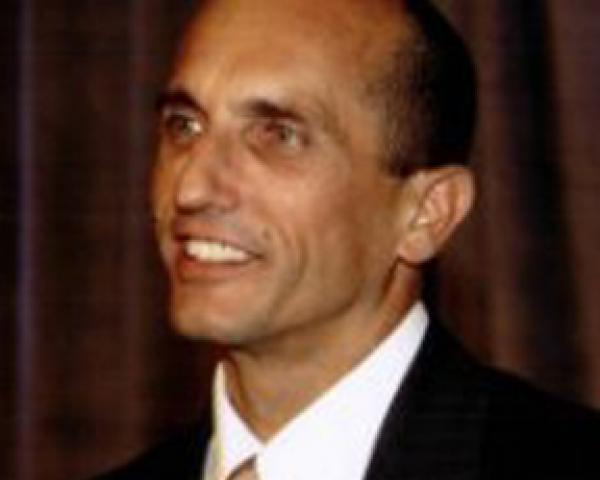The REAL Objection to Opt Out
Each and every vendor makes a buck off workers' comp, and each and every one has an interest in maintaining the status quo.

Each and every vendor makes a buck off workers' comp, and each and every one has an interest in maintaining the status quo.

Get Involved
Our authors are what set Insurance Thought Leadership apart.
|
Partner with us
We’d love to talk to you about how we can improve your marketing ROI.
|

David DePaolo is the president and CEO of WorkCompCentral, a workers' compensation industry specialty news and education publication he founded in 1999. DePaolo directs a staff of 30 in the daily publication of industry news across the country, including politics, legal decisions, medical information and business news.
With lack of physical activity during modern office workdays, encouraging exercise is in everyone’s interests. The question is how.

Get Involved
Our authors are what set Insurance Thought Leadership apart.
|
Partner with us
We’d love to talk to you about how we can improve your marketing ROI.
|

Stephanie Pronk is a senior vice president and leads Aon’s U.S. National Health Transformation team. Pronk combines more than 30 years of experience in developing, implementing and evaluating health improvement and benefit strategies.
In the fields in which it is trained, AI exceeds the capabilities of humans. It has advanced more in three years than in the past three decades.

Get Involved
Our authors are what set Insurance Thought Leadership apart.
|
Partner with us
We’d love to talk to you about how we can improve your marketing ROI.
|

Vivek Wadhwa is a fellow at Arthur and Toni Rembe Rock Center for Corporate Governance, Stanford University; director of research at the Center for Entrepreneurship and Research Commercialization at the Pratt School of Engineering, Duke University; and distinguished fellow at Singularity University.
Whatever lines of insurance you sell, there’s just one policy for company longevity: a strong leadership pipeline.

Get Involved
Our authors are what set Insurance Thought Leadership apart.
|
Partner with us
We’d love to talk to you about how we can improve your marketing ROI.
|

Lisa Pearne is vice president of sales at California Casualty, an auto and home insurance provider founded in 1914 that serves educators, law enforcement officers, nurses, and firefighters.
Millennials just think they do -- and we employers do them a disservice by not correcting them.

Get Involved
Our authors are what set Insurance Thought Leadership apart.
|
Partner with us
We’d love to talk to you about how we can improve your marketing ROI.
|

Christopher J. Boggs is the vice president of education for Insurance Journal’s Academy of Insurance. He joined the insurance industry in 1990. He is a self-proclaimed insurance geek with a true passion for the insurance profession and a desire for continual learning.
In a saturated market, suffering from overcapacity, will the "leave" vote on Brexit affect insurance premiums and, if so, in what way?

Get Involved
Our authors are what set Insurance Thought Leadership apart.
|
Partner with us
We’d love to talk to you about how we can improve your marketing ROI.
|

Tony Boobier is a former worldwide insurance executive at IBM focusing on analytics and is now operating as an independent writer and consultant. He entered the insurance industry 30 years ago. After working for carriers and intermediaries in customer-facing operational roles, he crossed over to the world of technology in 2006.
Insurers need a “platform solution” to enable agility, innovation and speed. The cloud can be the critical enabler.

Get Involved
Our authors are what set Insurance Thought Leadership apart.
|
Partner with us
We’d love to talk to you about how we can improve your marketing ROI.
|

Denise Garth is senior vice president, strategic marketing, responsible for leading marketing, industry relations and innovation in support of Majesco's client-centric strategy.
The traditional security perimeter has to be pushed out into the cloud to cover everything an employee might use.

Get Involved
Our authors are what set Insurance Thought Leadership apart.
|
Partner with us
We’d love to talk to you about how we can improve your marketing ROI.
|

Byron Acohido is a business journalist who has been writing about cybersecurity and privacy since 2004, and currently blogs at LastWatchdog.com.
Applicants' attorneys hope to usurp the medical decision making process in workers' comp and base it on litigation.

Get Involved
Our authors are what set Insurance Thought Leadership apart.
|
Partner with us
We’d love to talk to you about how we can improve your marketing ROI.
|

Richard (Jake) M. Jacobsmeyer is a partner in the law firm of Shaw, Jacobsmeyer, Crain and Claffey, a statewide workers' compensation defense firm with seven offices in California. A certified specialist in workers' compensation since 1981, he has more than 18 years' experience representing injured workers, employers and insurance carriers before California's Workers' Compensation Appeals Board.
The problem with the Oklahoma Option decision isn't simply that the state Supreme Court reached the wrong conclusion.

Get Involved
Our authors are what set Insurance Thought Leadership apart.
|
Partner with us
We’d love to talk to you about how we can improve your marketing ROI.
|

Daryl Davis is a member of the American College of Occupational and Environmental Medicine and is sought after by governmental agencies, insurance carriers, risk managers and others in this field. Davis founded www.WorkersCompensationOptions.com, a company committed to WC and legal alternatives to WC.